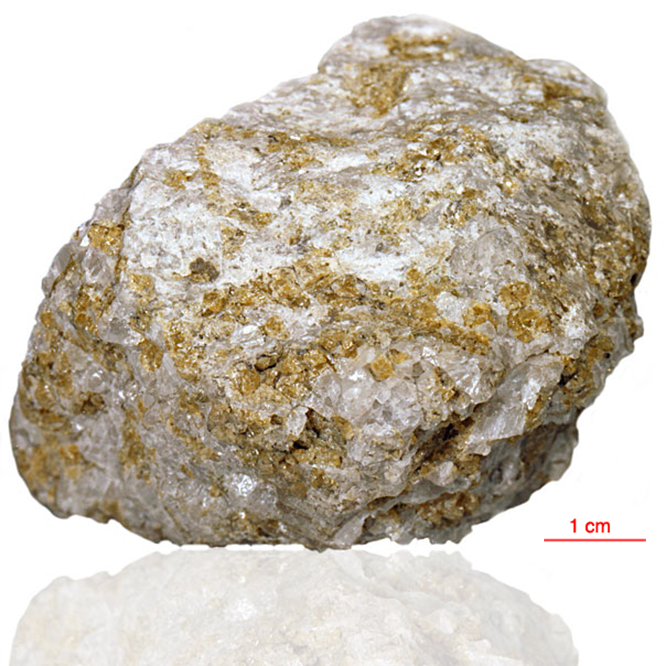
Fact sheet
Sample 76535 is a troctolite, a coarse-grained igneous rock that crystallised below the surface of the moon, but was excavated by later meteorite impacts. It exhibits evidence of shock after its original formation. This sample was collected as part of a rake sample.
76535 is an olivine plagioclase cumulate that shows evidence of extensive annealing and re-equilibration. It has a granular polygonal texture with smooth, curved grain boundaries and abundant 120 degree junctions. Small patches of vermicular symplectite intergrowth of chrome-spinel+pyroxene are a unique feature of this rock and are generally found at grain boundaries between olivine and pyroxene. Small patches of mesostasis contain minor minerals including: baddeleyite, low-Ca pyroxene, high-Ca pyroxene, apatite, whitlockite, chrome-spinel, metallic iron, K-Ba feldspar and pyrochlore.
The sample weighed 155.5 grams before analysis and is 4.330±0.064 billion years old (Sm/Nd).
Further details of this and other Apollo samples are here: http://curator.jsc.nasa.gov/lunar/
Apollo 17, the final manned landing mission, had two objectives: to obtain samples of ancient rocks from the lunar highlands and to look for evidence of younger volcanic activity on the valley floor.
This small Collection contains material deriving from both periods, including igneous rocks around 4.3 billion years old from the lunar highlands as well as younger volcanic samples dating from about 3.6 billion years ago.
Apollo 17 was launched on 7 December 1972.






